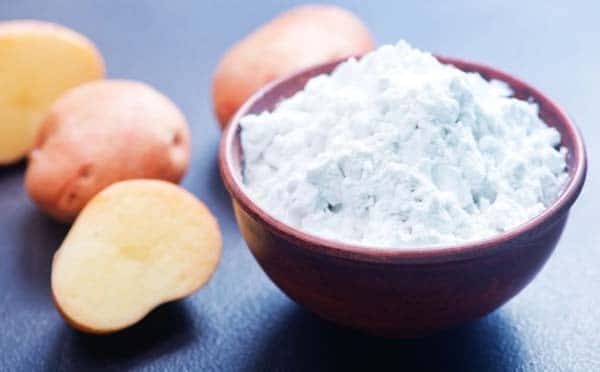The best thing about winter?
Probably the hearty soups, stews and chili sauces to fill up your tummy with delicious foods and lift your spirit!
Cooking on a chilly winter night requires a lot of creativity.
Suppose, you are half-way through a classic cream of mushroom soup recipe. To thicken the dish to your liking, the recipe calls for 1 tablespoon of potato starch into the mixing.
Guess what?
At that crucial moment, you don't have any! Now, what would be your next step to rescue the dish?
Should you run to the nearest local superstore, buy the ingredient and run back to see your soup is already ruined?
Or should you just leave it as it is, finish cooking without the starch and enjoy a mushroom soup that doesn’t taste much creamy at all?
The only you can solve this dilemma on a good note is to use something that’s already in your kitchen as an alternative!
Here, in this article, we have gathered some handy potato starch substitutes that will help make delicious soups, stews and sauces everyone loves to have in winter!
Also Read: Top Picks Buying Guide For Grapefruit Spoons.
What Is Potato Starch?

Before talking about what sort of alternative items you can use instead of potato starch, first, let’s discuss what this thing is and how it helps in your cooking!
So, potato starch basically works just like its name suggests.
It’s one kind of starch that’s derived from crushed potatoes! Once derived, the starch looks like a fine, powdery substance.
The starch is made by peeling the potatoes first. After that, it’s made into a slurry, which is later dried out to form the potato starch.
Speaking of taste, it doesn’t have any specific one. Honestly, it’s a flavorless product. However, it works great as a texture enhancer for other recipes.
What Is Potato Starch Used For?
By now, you must be getting curious about what type of dishes are made with potato starch, right?
Well, there’s a long list of recipes you can use this magic ingredient in, to be honest!
Let’s see some example below:
As A Thickener: Broth, soup, stew, sauce or gravy, potato starch is used to thicken all liquids! As the element doesn’t have any personal taste/color, it doesn’t change the appearance of your dish by any means. In addition, it doesn’t give your broth a cloudy appearance once it’s added to the cooking pot.
To Bake Dough: When you bake the dough for your favorite cake, it needs some kind of added moisture on top.
However, if you add any other liquid substance, it will end up having a limp consistency that won’t hold up on its own. Potato starch, on the other hand, gives cake dough the glossy appearance it needs without the added trouble.
Alternative To Potato Flour: Running short on potato flour? You can use potato starch as an alternative!
Just mix it with rice flour in 1:1 quantity and you get your very own version of potato flour.
This ingredient is typically used in recipes to thicken gravy items and enhance the potato flavor even more if possible. It also helps add creaminess to dessert items and makes baked goods nice and fluffy.
As An Additive: Noodles, bakery items, processed meat, cheese etc. have shorter shelf lives. In order to preserve these items, potato starch is often put on as an additive. It gelatinizes these food items and keeps their original taste and flavor intact. It also enhances the texture of these items.
Substitutes for Potato Starch: Our Top List!
Time for getting introduced with the substitutes!
You may look for an alternative for a variety of reasons. Keeping that in mind, we have organized this section so that you may find the one that you need instantly!
1. Potato Starch Alternative In Gluten Free Baking:

Nae: Sweet Rice Flour.
Why It’s Good For Gluten-Free Baking?
Sweet rice flour is derived from sweet rice. Sweet rice is a sticky substance that contains higher starch than regular rice. The high amount of starch doesn’t contain any gluten and helps bind ingredients together nicely.
In addition, it's a bit finer than regular rice and therefore, doesn't add the gritty feeling you hate in baked goods!
How You Should Use It?
We recommend using the sweet rice flour at the beginning of your cooking process.
The amount you should use for baking gluten-free goods depends on how much liquid you are using. For every cup of liquid, use 2 tablespoons of sweet rice flour for the best result.
2. Alternative to Potato Starch In Frying:

Name: Cornstarch.
Why It’s Good For Frying?
Cornstarch is the secret ingredient that makes your chicken fry crispier!
Cornstarch is known to prevent gluten development. The light cereal-based starch helps make the coating get a crunchy texture. It absorbs all moisture and creates an opaque finish in high temperature.
How You Should Use It?
Cornstarch has a neutral flavor.
It works almost the same as potato starch, to be honest. The soft, gluten-free starch gives a glossy finish to liquids. As it looks, feels and tastes the same as potato starch, you can use this substance in the same amount you would use for potato starch.
3. Replacement for Potato Starch in Gluten Free Bread:
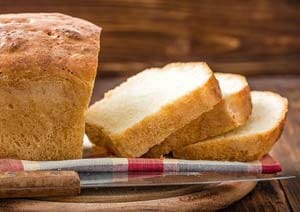
Name: Arrowroot starch.
Why It’s Good For Making Gluten-Free Bread?
Arrowroot is collected from several tropical plant variants.
The roots of the plants are pounded to make a pulp. The pulp is then processed to a dried form and made into powder.
As it’s an effective thickening agent, arrowroot powder works really well in making baking goods like bread. The element doesn’t contain any protein and contains only 3% fiber. Therefore, it’s suitable for a gluten-free diet.
How You Should Use It?
Like cornstarch, you don’t have to worry about the ratio while using arrowroot powder. If a specific dish required 1 teaspoon of potato starch, you can just swap it for 1 teaspoon arrowroot powder without any further calculation.
4. Sweet Potato Starch Replacement:
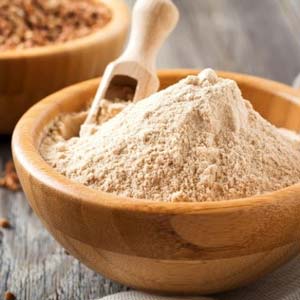
Name: Water chestnut flour.
Why It’s Good As A Sweet Potato Starch Replacement?
Water chestnut flour is derived from grounded water chestnuts. The chestnuts are first boiled in water, peeled and processed into a fine powder.
It works as a great alternative for sweet potato starch, because, it has a thickening nature that makes a great batter for fried items, baked goods etc. It’s also a gluten-free item.
How You Should Use It?
We recommend mixing with plain water first to dilute the substance. After that, you can add it to your desired item as a thickening agent.
To lengthen the shelf-life, store at room temperature in a sealed container. The item should be good to use for at least 6 months.
Also Check: Hot Plate for Cast Iron Skillet – Reviews and Buying Guide
5. Potato Starch Alternative For Grain-Free Lifestyle:
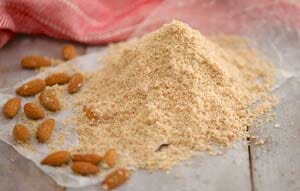
Name: Almond flour.
Why It’s Good For Grain-Free Lifestyle?
If you are a health-conscious person and prefer a grain-free lifestyle, then almond flour is a good option for you!
Almond is full of vitamins and nutrients. 1 ounce of almond flour has almost 6-gram of protein and 3-gram of fiber. It’s more beneficial than whole wheat flour or even grain flour. However, it’s a bit pricey compared to the rest.
Related To: Head To Head Comparison Of Ground Turkey vs. Ground Beef.
How You Should Use It?
There is no standard conversation applied for using almond flour.
As it’s usually used for making sweet treats like brownies, cookies etc., just keep in mind it has a nutty flavor to it that will add in your baked food items.
Relevent Reading: Best Pecan Cracker Reviews by An Expert.
Other Potato Starch Substitutes
Apart from the most popular ones, we also found some other options that work great as a alternative for potato starch. These are not used for any specific purpose. You can just choose the one that you have in your kitchen at the moment!
6. Ground Matzo
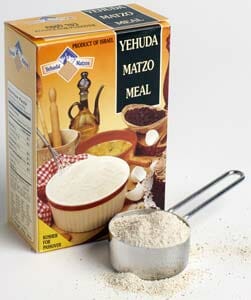
Ground matzo is a not-so-popular alternative, to be honest.
We only recommend using this item when you have no other options left!
It’s basically a flatbread that’s eaten in Jewish cuisine. To use it in your dish, first, you have to pound them into thick powder and then add the powder into your mixture accordingly.
7. Wheat Flour
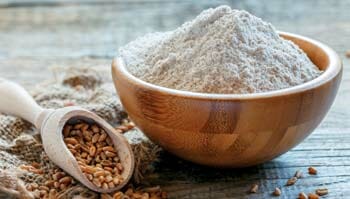
If gluten is a concerning matter to you, then you can try using wheat flour as an alternative.
Wheat flour is typically used for baking. However, you can also use it for making a batter for frying/coating foods/thickening sauce.
If you choose to cook with this ingredient, keep the flame on low heat and cook slowly. Otherwise, the ingredient may create a clump in your dish.
Also Read: Buying Guide To Purchase Food Strainer and Sauce Maker.
8. Tapioca

Tapioca is also known as tapioca starch.
The ingredient is extracted from cassava root and works the same way arrowroot powder does.
However, tapioca is lighter than potato starch and therefore, you need to use 2X amount to thicken your gravy. Also, it doesn’t work with acidic items. So, you should use this ingredient at the end to make it effective.
9. Coconut Flour
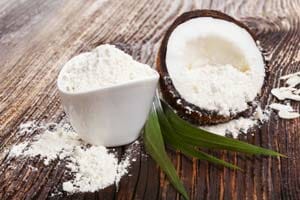
Coconut flour is a nice alternative for people who choose to live a vegan lifestyle.
While using this ingredient, you have to be a little careful. As it has a different texture, it will alter the appearance of your food as well. We recommend reducing the measure of coconut flour around 15%. Otherwise, the dough will become too hard to work with.
Tips For Working With Starch Or Starch-Alternatives
Whether you work with potato starch or uses some of its alternatives, there are a few things you should keep in mind to achieve your desired consistency.
- Starch or its alternative is meant to thicken a liquid, right? While doing so, you should also keep an eye on the flavor as well. Keep tasting as you mix these ingredients and add seasoning like salt and pepper to balance the flavor.
- Don’t just dump the starch into your dish straight away! Mix the starch or its alternative with an equal amount of water, make a paste and then use it in your cooking. Otherwise, you may end up having lumps in your dish.
- If you are picky about the texture quality, then go for arrowroot powder instead of flours. Arrowroot thickens up your sauce/gravy without adding any extra opacity to it.
- Once you have added the starch alternative into your food, do NOT try to boil that again! This action will defeat the purpose of adding a thickening agent and your food will become slimy again.
- If you are using flour substitute you may have to recheck the moisture level and adjust accordingly.
- The substitute ingredients should be stored properly to lengthen their shelf lives. We recommend storing them in a cool, dark place and make sure the container is sealed tightly and safe from pest attacks.
- Potato starch and its alternatives are not exactly the same thing. So, start off with a small amount of the ingredient and gradually increase the amount. That way, you will have control over the consistency of your liquid.
- If you are working with sweet baked goods like cookies and pies, use sweet flour instead of regular flour alternative to enhance the taste.
- If you are on a weight-loss diet, use almond flour as a substitute. It's healthy, has lots of nutrition and makes you feel full the whole day.
Conclusion
Ready to go on with your recipe even if the desired ingredient is unavailable at the moment?
These substitutes for potato starch will help you make pies, cookies, stews, soups, fillings, puddings and many more delish items without any delay!
You can even make your dish gluten-free if you want with these various options. And that too without changing your favorite recipe's flavor and texture even for a little bit!
Hopefully, our article has helped your cooking/baking session and made you realize that there’s always an option to fix stuff in your life as long as you know where to look!
Releted Article:
SeaRanchLodge.com is a participant in the Amazon Associate program and will earn from qualifying purchases.


